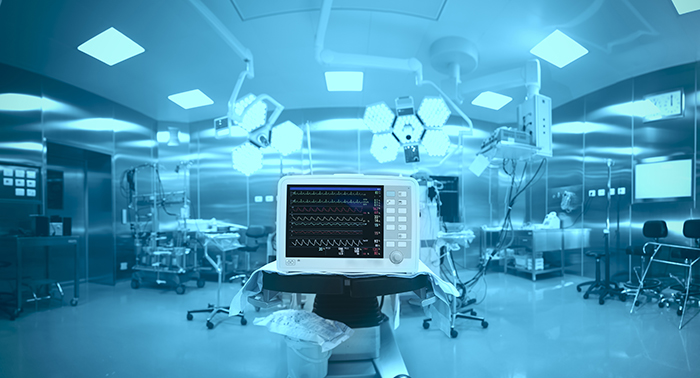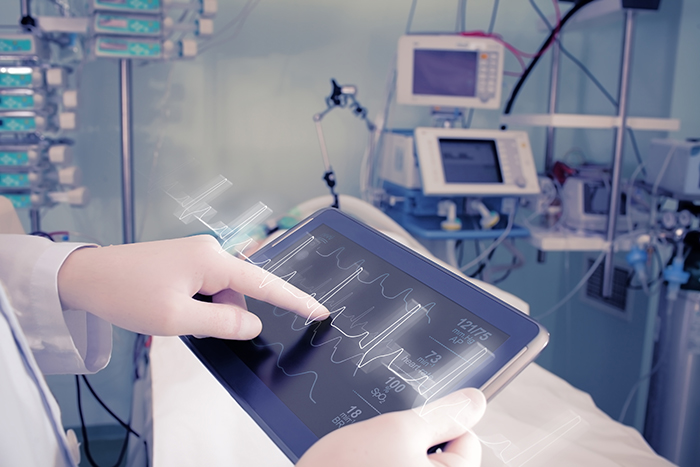Lessons for medical equipment design
COVID-19 care and treatment will transform the way medicine is practiced which will in turn have a transformative effect on medical instrument design. John Bowman, Marketing Director and Lead: Medical Task Force, Anglia Components, offers some lessons on medical equipment design.
Large established manufacturers (not unexpectedly) made the running by ramping production quickly to supply the needed ventilators, infusion pumps and other systems required to meet the immediate demand. Smaller manufacturers have had to cope with unprecedented challenges of a massive scale-up under huge time pressure. The coronavirus crisis is a game-changer. Design of these and other instruments is having to adjust quite fundamentally to address the new paradigm in treatment.
It has been a steep learning curve. Medical equipment manufacturers have quickly absorbed a lot - not just about improvements to the devices themselves; equally important considerations are design-for-manufacture, test and compliance and, increasingly, to incorporate predictive maintenance capabilities.
First, there is the issue of volume. We are seeing instruments normally made in quantities of hundreds per week now being manufactured in thousands per day. This means that specialist medical manufacturers have had to take in the good practice well established in the consumer electronics space. Small makers have had to rapidly take on-board the best practices for critical and time-critical designs. A further practical issue to consider is the manufacturing process itself, given the need to protect manufacturing personnel from risk of infection or passing infection on. Such pressures extend right along the supply chain.
Ramping-up is hard to do
For some manufacturers, availability of parts has been the greatest challenge. In addition, such a steep ramp requires the tooling-up of production lines, and the training of assemblers and testers. A major lesson has been the importance of a robust bill-of-materials for medical equipment across the board. Single-source components can be especially problematic. Future designs should make thorough use of multiple Approved Vendor Lists (AVLs) to facilitate problem-free sourcing in high volume of alternative components in the quest to mitigate production risks.
A key obstacle for massively increased numbers of medical equipment like ventilators is the exponential growth in the need for test. Accelerated production requires testing and diagnostics during development and at the point of manufacture. The issue is compounded by having many more machines in service, all running for extended periods at higher duty cycles. This ‘new normal’ of medical equipment therefore dictates more emphasis on design-for-test, with orders of magnitude for more self-configuration, self-testing and self-diagnostics. Test and configuration times now need to be measured in seconds, not minutes or hours, as is the old norm.

Above: Instruments need to collect sensor data and present it to a carer standing away from the patient
Enlarging the pool of medical devices makes vastly increased demands on maintenance and repair. Typical COVID-19 patients in hospital have in the region of 20 pieces of medical equipment surrounding them. Besides the ventilator there can be up to 14 separate infusion pumps. It all needs monitoring and maintaining, since patients’ lives are at stake.
Making the machines more modular and less monolithic allows for more structured monitoring, with predictive maintenance built in. Ongoing needs for maintenance and (inevitably) repair can be mitigated through longer and more predictable service intervals. Further, the process can be simplified by designing-in simpler maintenance/repair procedures, for example, by greater use of swap-out cards and looms for replacement subsystems. Solutions like this address another design issue highlighted by the coronavirus crisis – the need for distance.
Design for distance
Pre-COVID-19, carers and clinicians have been happy standing close to their patients when setting up instruments and taking readings. That will become much more of an issue – especially when there is a risk of spreading or acquiring infection. Hospitals, care homes and other medical facilities need to look after staff as well as patients and auxiliaries. Instruments need to be designed for operation at a distance from the patient.
This is a particular issue, of course, when testing for the virus itself, and two companies, GB Electronics (UK) and Inovo Robotics are working with Brunel University, Lancaster University and the University of Surrey to develop the inexpensive, rapid diagnostic test kit based on a battery operated, hand-held, smartphone-linked device that is both safe and easy to use.

Above: Personal devices like tablets will become part of instrument UIs
However, distancing now needs to permeate through all aspects of medical treatment. For example, helping clinicians listen to patients’ heart and lungs is imperative to their ability to treat all patients, including those affected by COVID-19. However, conventional stethoscopes with rubber tubing are incompatible with layers of PPE. There is a need for what is being termed Safe Distance Auscultation: the process by which doctors can listen to patients’ hearts and lungs while wearing Personal Protective Equipment (PPE) or from a safe distance. This alternative solution has a universal size jack that can connect to speakers, headphones or a wireless output at a distance. This makes it easier for doctors in protective gear to listen to patients’ lungs – even over the noise caused by the filtration and purification systems. Alternatively, it gives clinicians the option to listen to patients in separate rooms or behind anti-infection screens.
More comprehensive tele-monitoring is possible by using wireless, wearable sensors such as a ‘smart patch’ cardiac sensor and a continuous temperature sensor to automatically collect and analyse patients’ condition. Heart rate, respiration rate, temperature, oxygen saturation levels and blood pressure can be monitored – remotely and in real-time. This all adds up to a higher standard of safety and care based on continuous data and analysis.
UI thinking outside the box
Development of new medical equipment and platforms typically starts with a full review of the existing production process. Manufacturing specialists review the details of current operations, identifying process bottlenecks in assembly and testing.
And, when it comes to patient treatment as well as care, the user interface itself can often benefit from the same radical rethink. Touchscreens are a popular, reliable and versatile user interface for medical and other instruments, and are also much easier to seal to allow ‘deep cleaning’ with aggressive anti-viral and anti-bacterial agents. Nevertheless, there is a new desire to limit the risk of viral spread by separating the carer’s UI from the equipment or sensor attached to the patient. Here, instruments need to be redesigned with a touchless two-way communication from a smartphone, tablet or other device allocated to the carer (right). Moreover, the interface can be operated behind physical barriers. Gesture and voice recognition are further options that will further impede transfer of infection from user to user.
Finally, a new level of robustness needs to be built into these new designs. Medical equipment and devices, which reduce infection through physical distancing as well as utilising novel ‘hands-off’ interfaces, will be worked hard, even as the coronavirus crisis subsides. The expected operational demands on medical equipment (run hours, longevity) have increased significantly and need to be addressed.
Priority support from design to delivery
These processes will take time. But time is not on their side. Right now, rethinking the way in which medical instruments are designed, manufactured and maintained cannot wait. Fortunately, the industry is rallying round to support these new players, as well as bringing better practise to established old hands. One successful approach is the formation of a COVID-19 task force that coordinates, prioritises and allocates available inventory and applications engineering resources. This is already supporting customers who are designing or manufacturing ventilators and other vital medical equipment to combat the COVID-19 emergency.
Projects that need priority go beyond the ventilators themselves. Electronics distributors such as Anglia have customers involved in manufacturing critical systems which guarantee power to this vital medical equipment. The support has been strengthened and extended to help companies get critical medical equipment out to hospitals and surgeries quickly. This fast-track service is resourced with a dedicated team to ensure support for customers manufacturing medical, industrial, environmental and other instruments.










